First morning in Istanbul. I was woken up at 5 am with the sound of the prayer echoing through the city. There were several speakers, on minarets from multiples mosques, projecting the chant like a powerful choir.
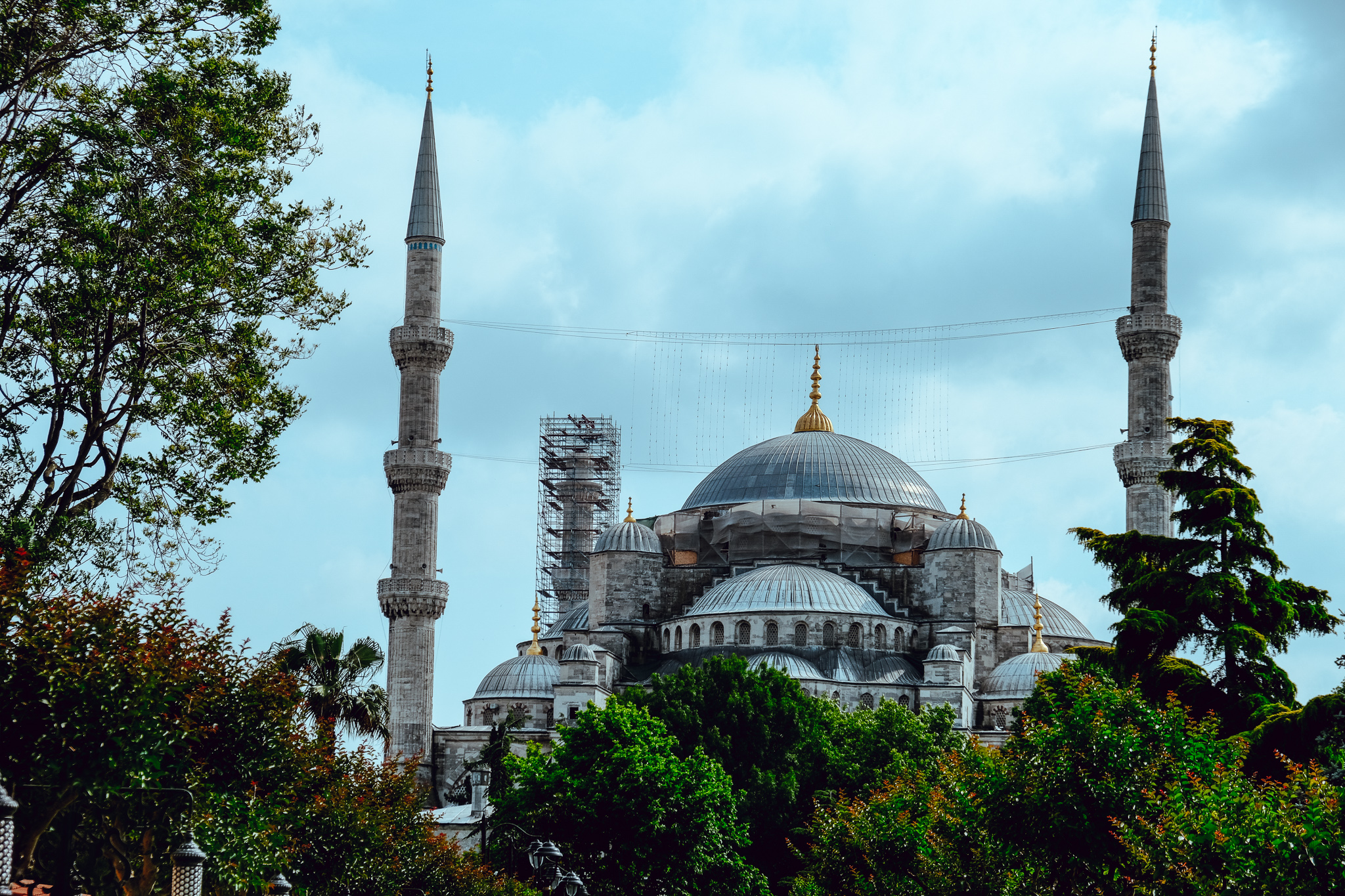
Our first stop was at a jewellery and scarves shop near our hotel. I wanted to get something to cover my head so I could visit the Blue Mosque. The scarves were beautiful – pricey too. I’m the worst negotiator ever, I barely like neutral human interaction let along bargaining, so they ended up costing 20 euros each. I’m certain I overpaid but at least I didn’t find any like these on other stores or streets vendors walking through Istanbul. Sometimes the merchandise is exactly the same through all retailers and you’re just unlucky enough to not find the cheapest place.
We see Sultanahmet Square in daylight for the first time and it is grand and open in an otherwise crowded city. And I had an unexpected culture shock.
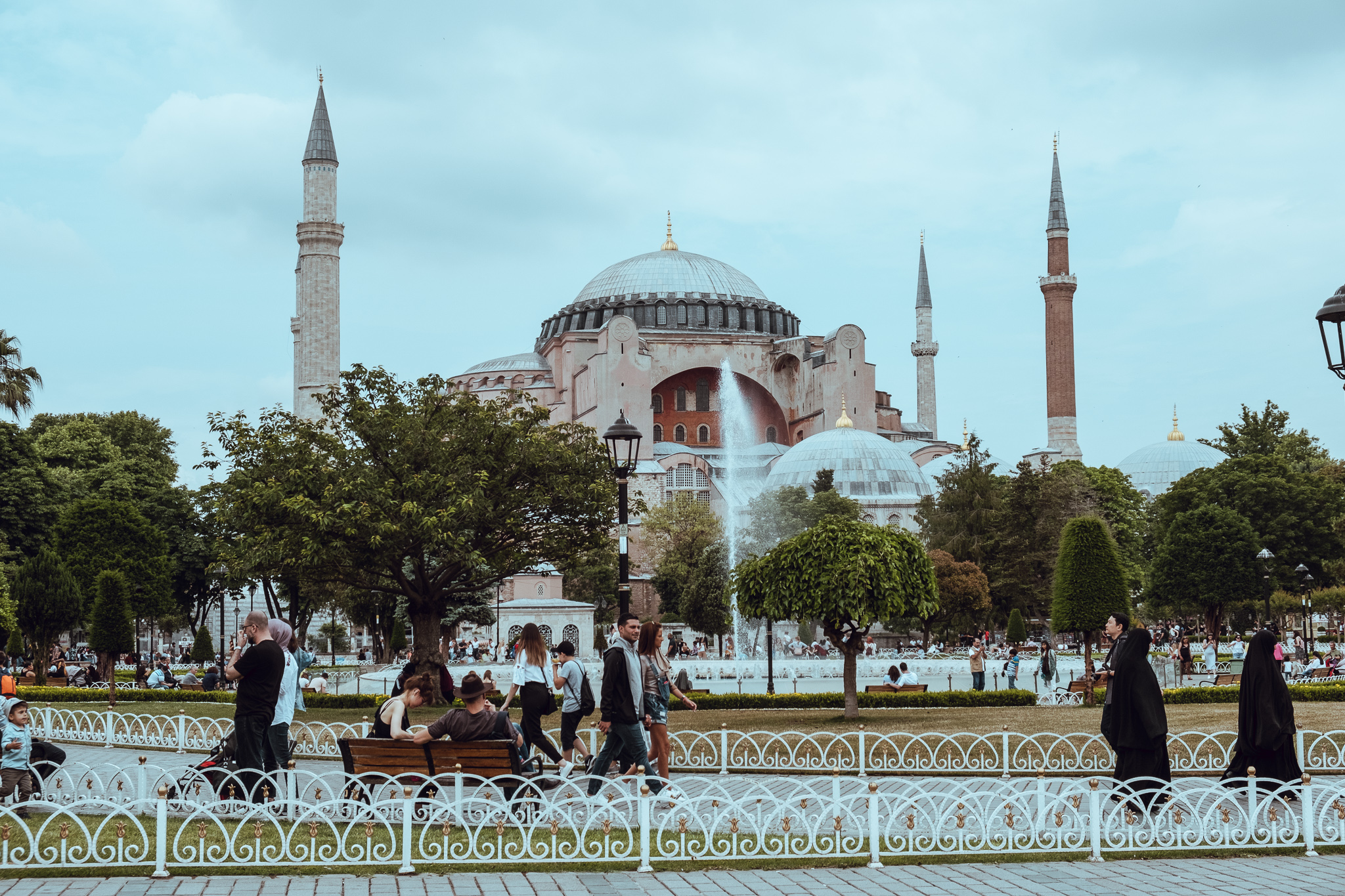
I looked around and almost every woman was covered, head to toe. More than a few had their faces covered too, in black burkas with only the eyes showing. I had pants and a three quarter sleeve blouse, but suddenly I felt exposed. I wondered if maybe I got cheeky bringing too many shorts with me. Note this was back in June and it was hot. After much looking around I found another (clearly) tourist girl – pale as ever, blonde, tall, very Nordic – with her boyfriend, in short shorts and a crop top. I wondered how she felt (she didn’t seemed phased).
This self-conscious feeling was all me by the way, because nobody cared: everybody was minding their own business, no one was looking at me – or at the Nordic girl, for that matter. There’s just something to it when you’re the odd man (or woman) out. It involuntarily feels like you’re doing something wrong.
The Nordic girl (as she will forever be referenced as) probably had been in Istambul longer than me. Turns out most people near the Blue Mosque were tourists (which makes perfect sense), some from much conservative Muslim countries, because the monument is indeed, a working mosque. In case you’re worried with this aspect of visiting Turkey, know that Turkish women dress all kinds of ways, and nobody cares about what you are wearing, at least in any remotely touristic part of Turkey. I saw no reproving looks the entire time I was there, from whoever, or whatever their type of faith, no matter how much skin was showing. To enter the Blue Mosque they hand you a long skirt if your legs are showing, and veil if you’re not covered, for you to be able to visit, and there is no judgement whatsoever from the people working there. If anything, just boredom.
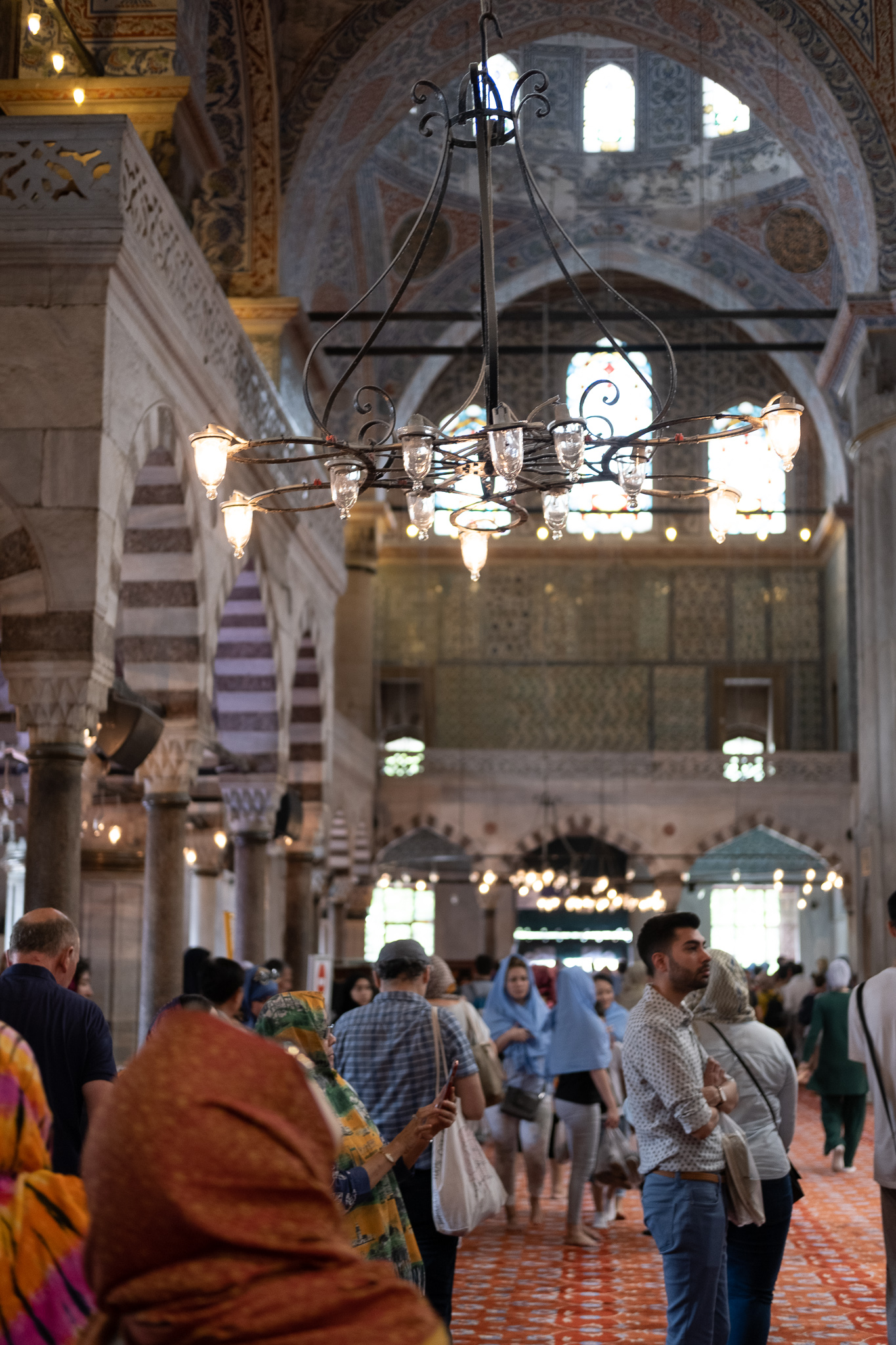
Self-awareness aside, something curious I found with the mosque is that inside, the space looks much smaller than what it appears from outside. There’s a twist about the perceived scale: either the interior looks smaller than it really is, because the carpet and the domes give it a “cozier” vibe, for a lack of a better word, or the multiple layers of the building that you see from the outside make it look bigger than the actual size.
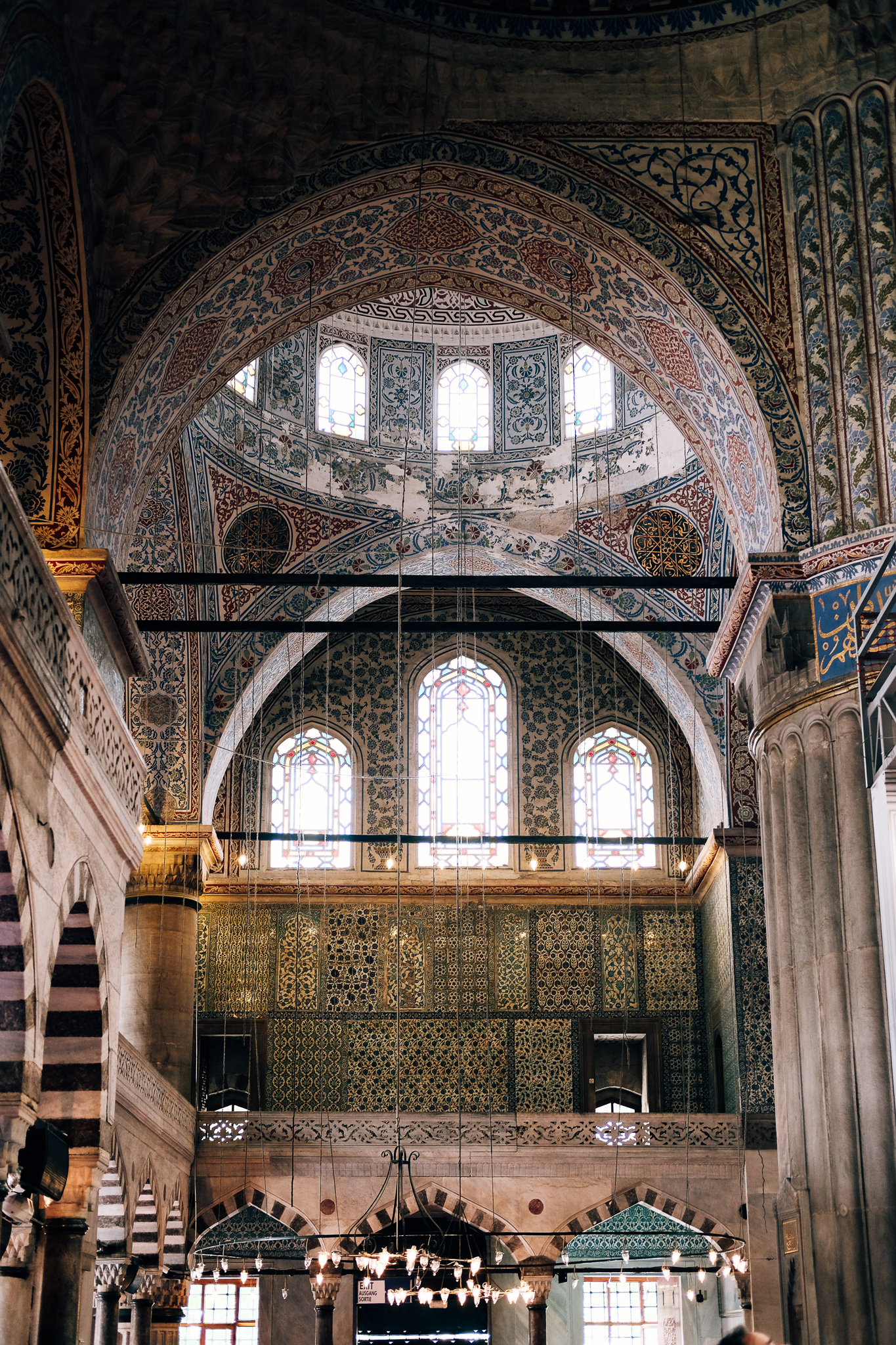
We left the mosque and a tiny, warm rain was falling. The sky was getting cloudier and the light for photos of the outside was getting worse. We found cover in a quieter, almost empty building near the mosque: Sultan Ahmet’s tomb. Sultans and family members lay there, over 30 people in this 17th century mausoleum.
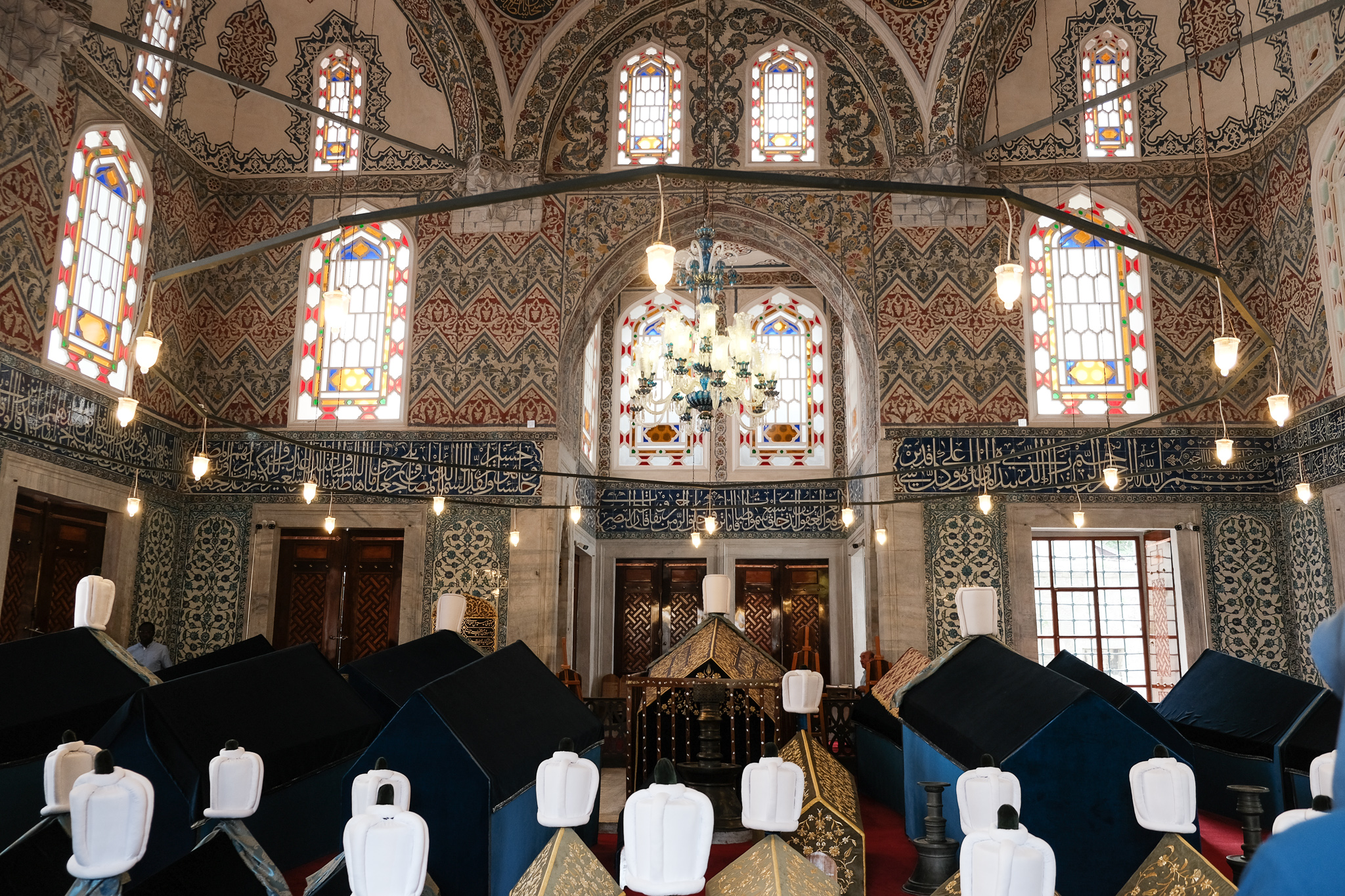
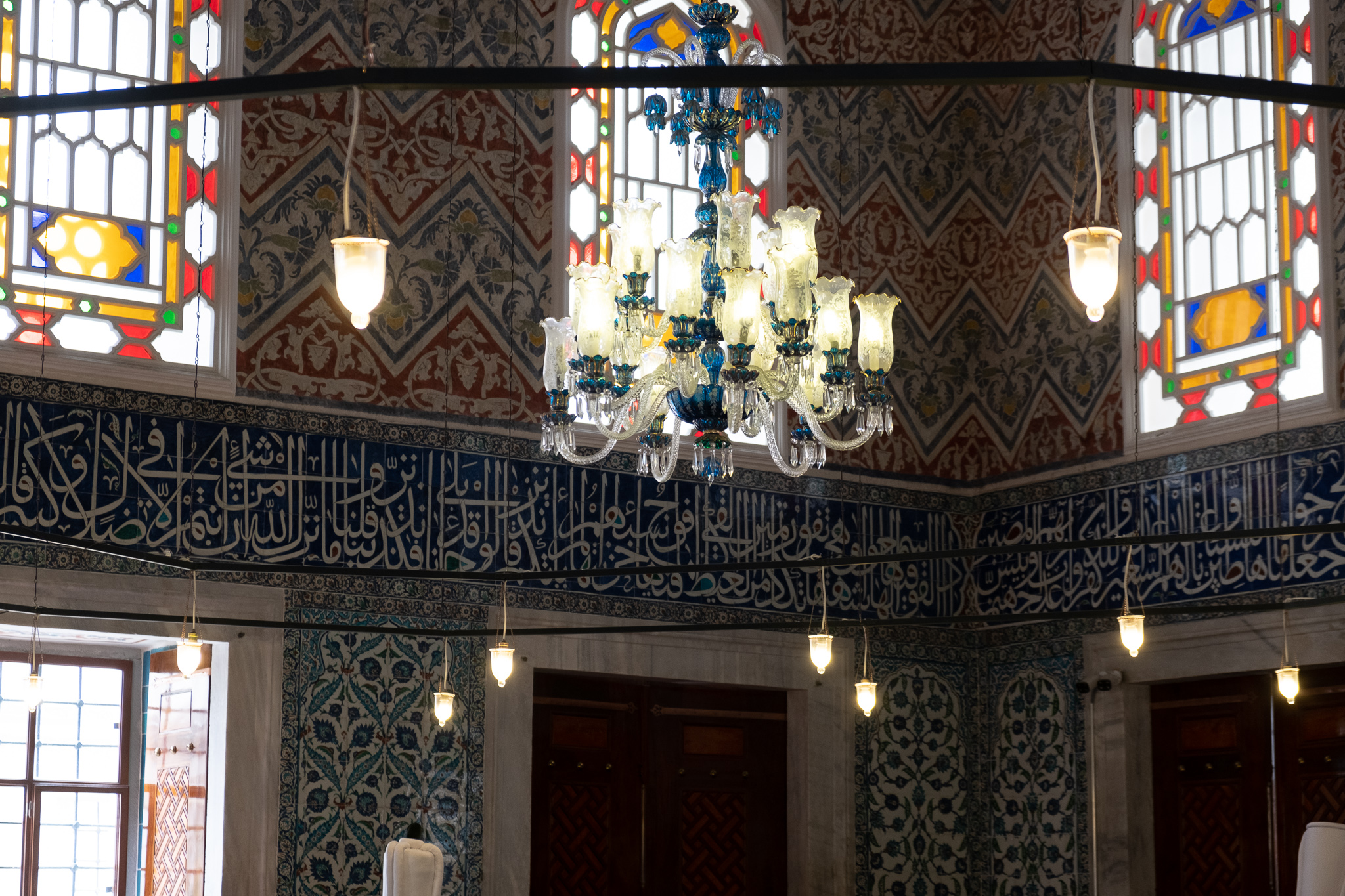
We ended up staying inside longer than initially planned. It was such a contrast with the other crowded areas of Sultanahmet square. The building itself had a lot of mosaic and calligraphy details for you to feast your eyes on.
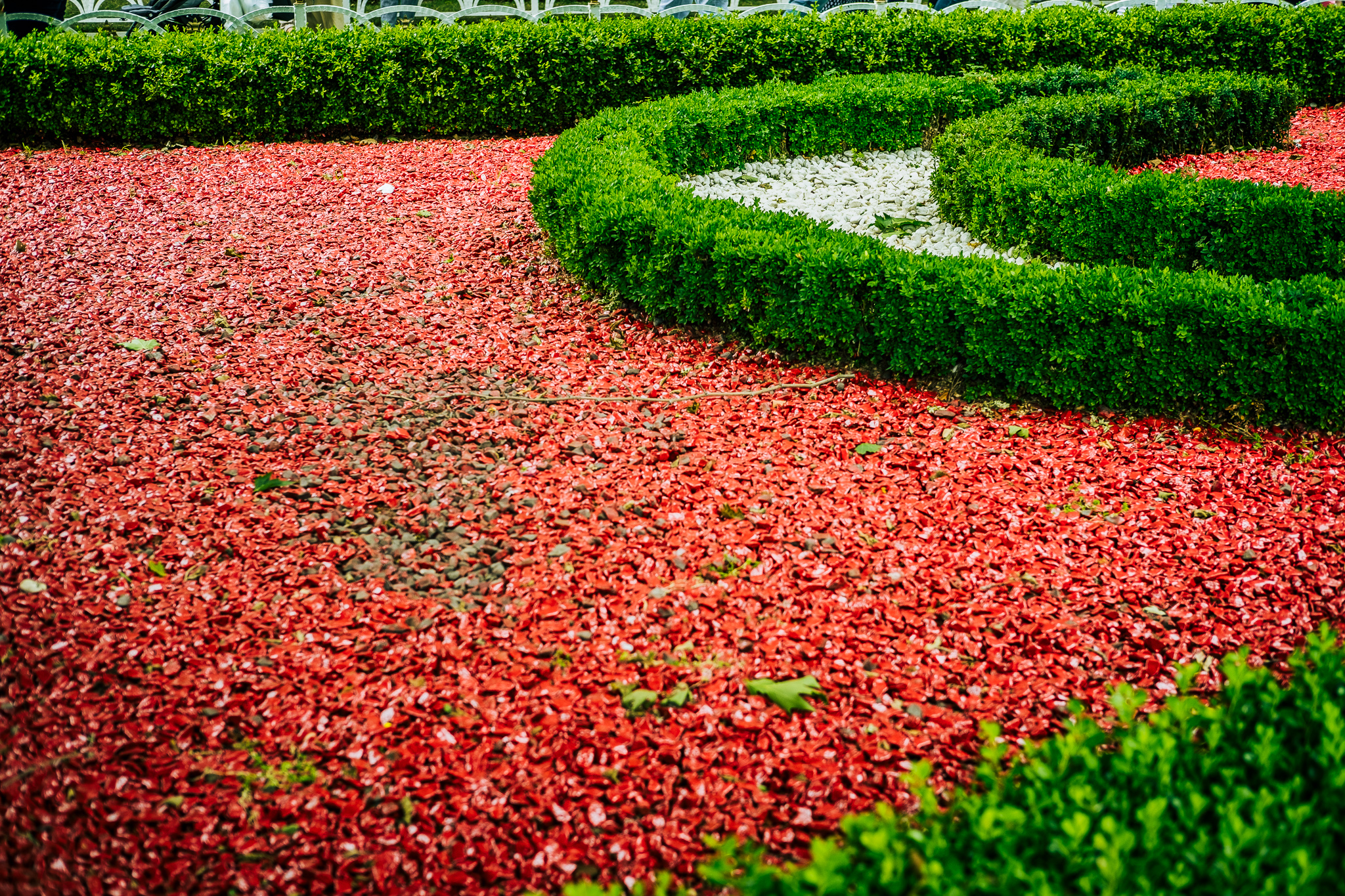
The gardens that stand between the Blue Mosque and Hagia Sophia are beautifully well kept. A slow stroll is advised, we ended up discovering details that seemed to go unnoticed by many by-standers.
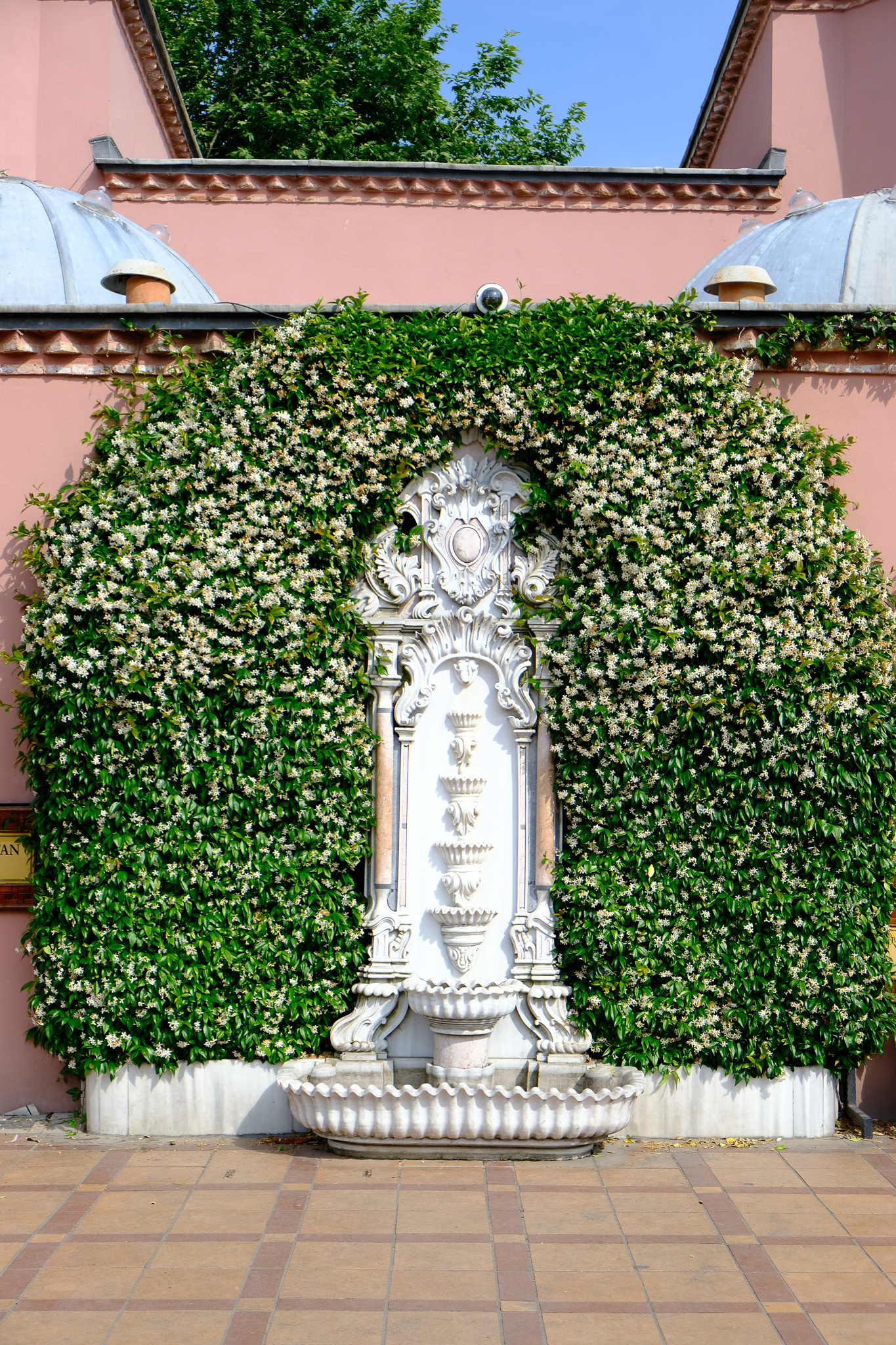
Our next visit was to Hagia Sophia. Holy Wisdom. Now this was the definition of grand. The building has a history that matches the dichotomy of the city itself: it served as a cathedral, the largest in the world, for nearly 1000 years, a mosque for another 500 years, and now it’s been a museum for almost a century. It bears in its walls the scars of the wars and conquests of the city since it’s birth in the year 537, in old Constantinople.
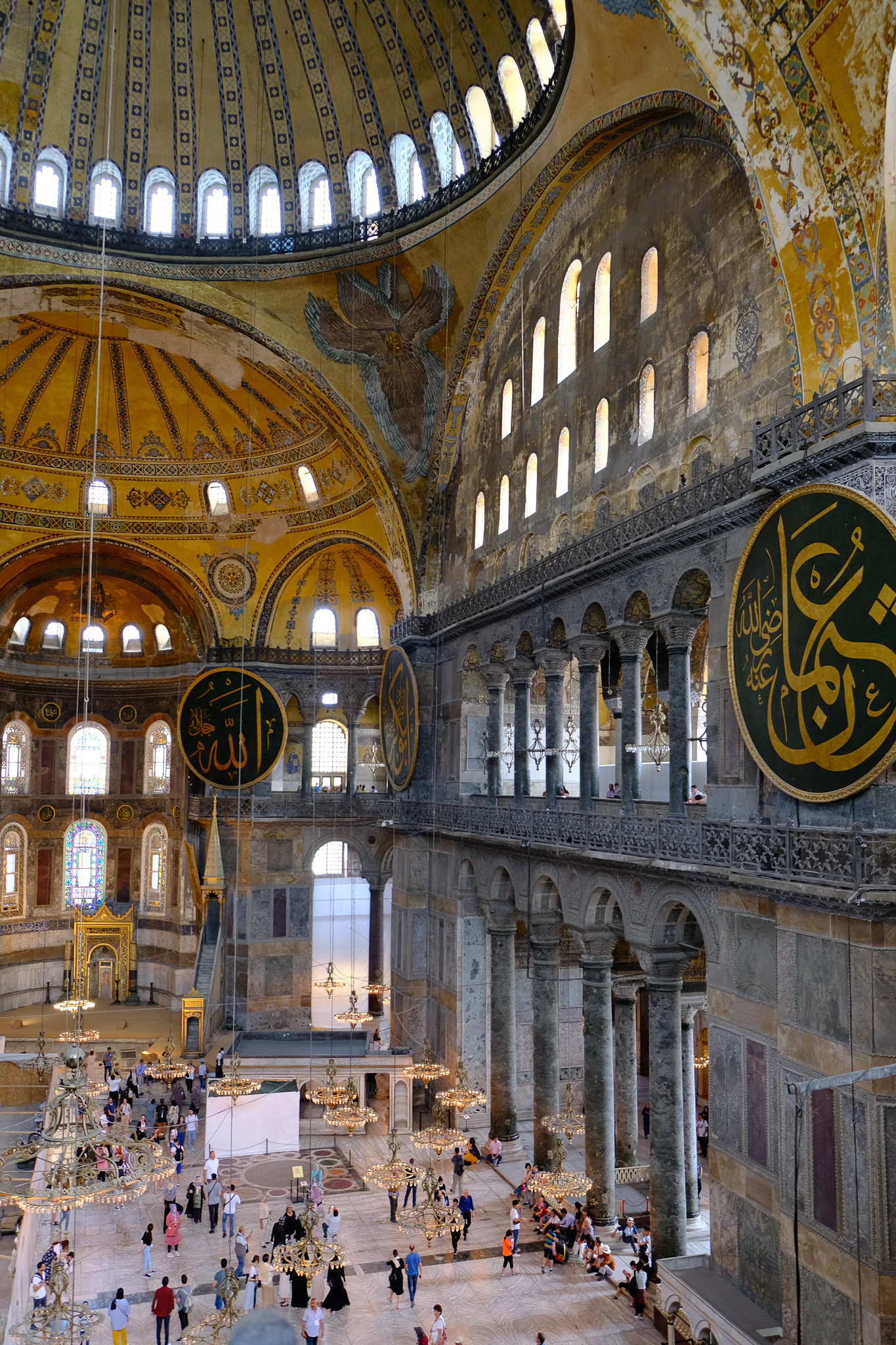
What a massive and impressive structure for being built in the 6th century. If I was to see this monument out of context I wouldn’t know in which country, culture or empire to place it, because it carries evidence of so many.
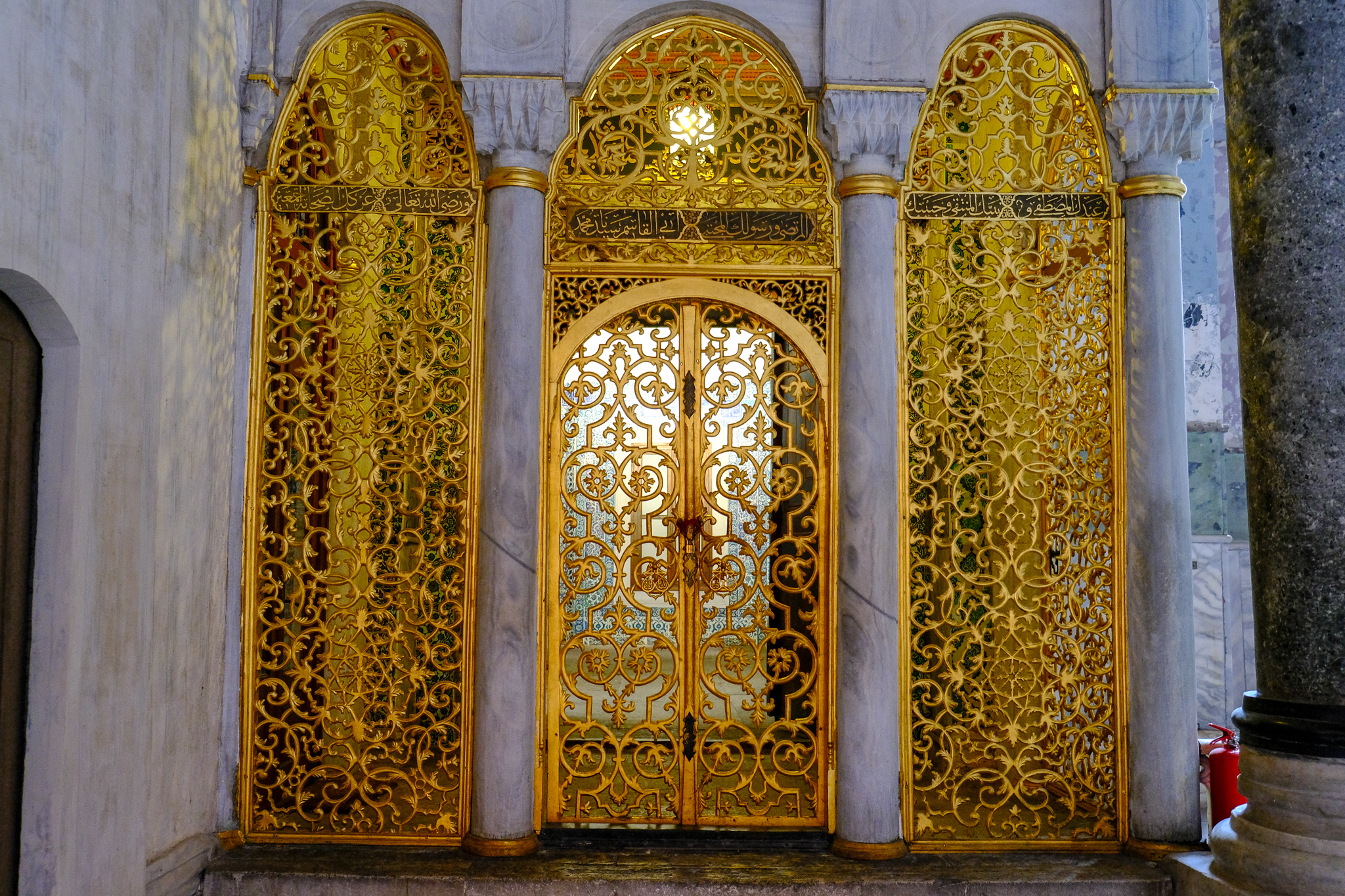
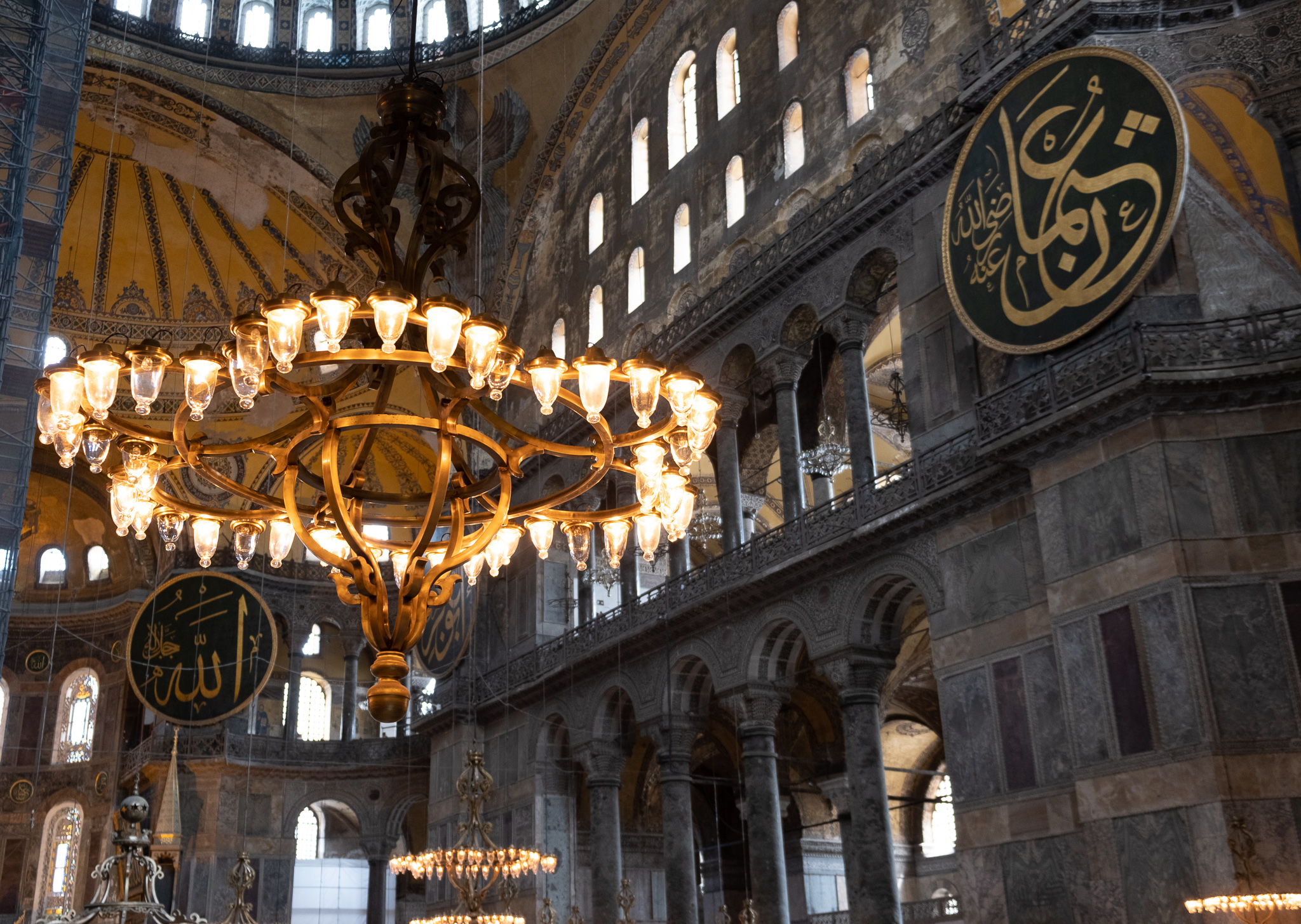
Four gigantic calligraphy disks hang from corner points around the interior, representing the 4 caliphs that succeeded Muhammad.
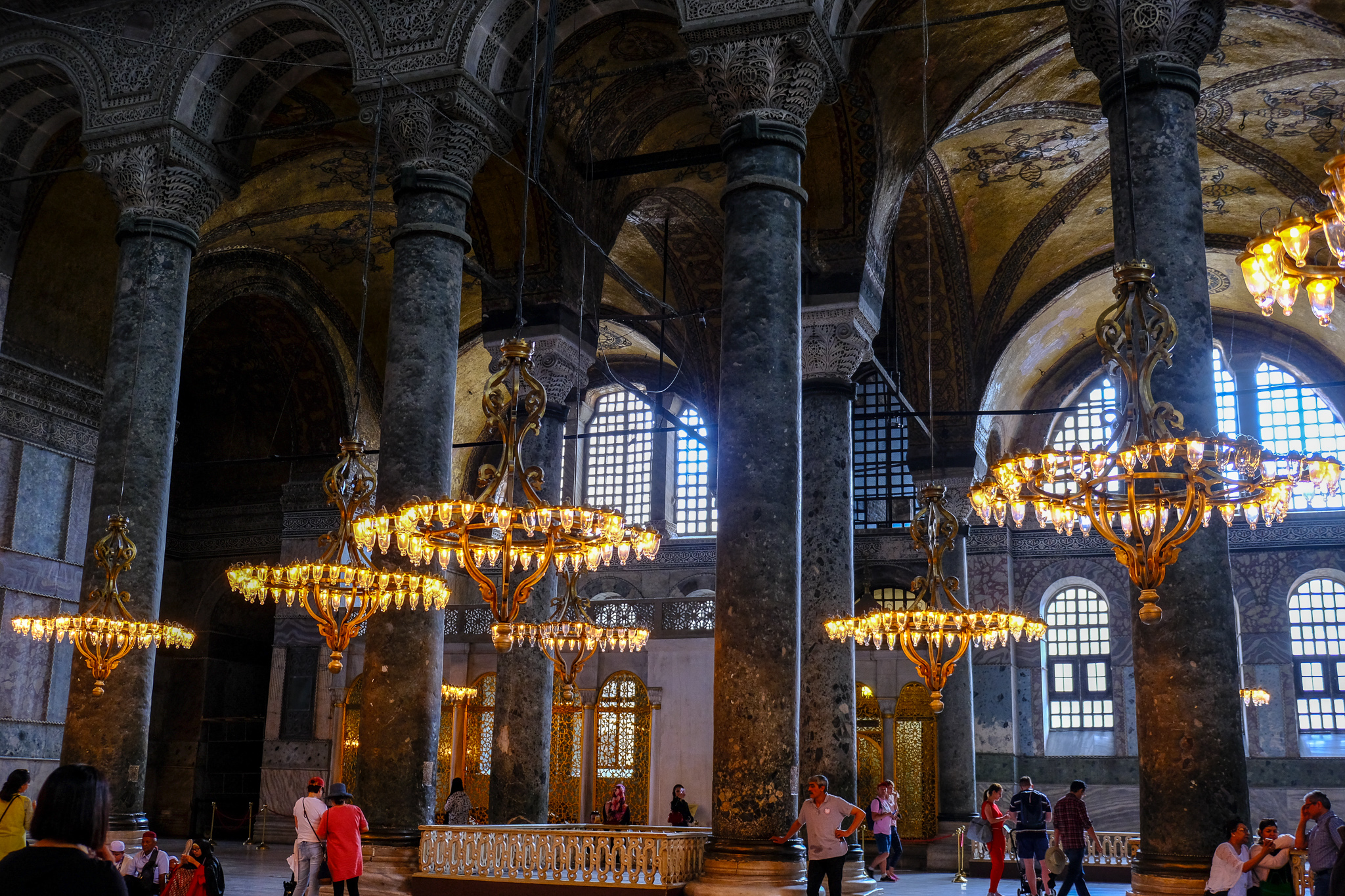
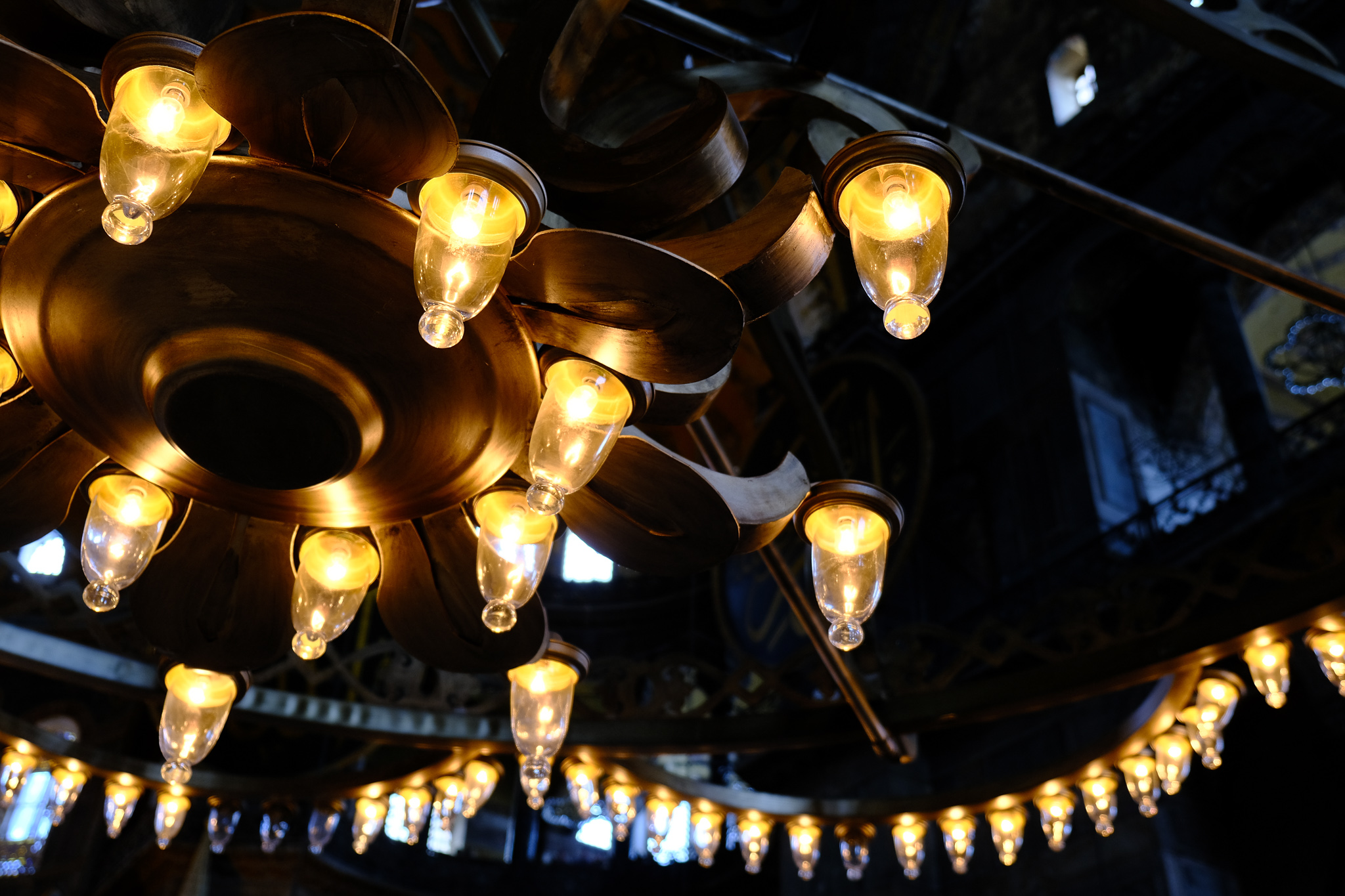
We ended the day by watching a ceremony of the whirling Dervishes. If you’re unfamiliar, the dervishes are part of Sufism, a mystical order of Islam, and they frequently hold a ritual heavy in symbolism, in which they whirl almost in a trance, to get closer to their divine entity. We couldn’t film or take pictures, the room was small and not crowded, and you couldn’t aplaude at the end: it wasn’t a show, but a religious ceremony.
An ethereal day, if I had to use only one word to describe it.
Photos by Sir Fiancé.
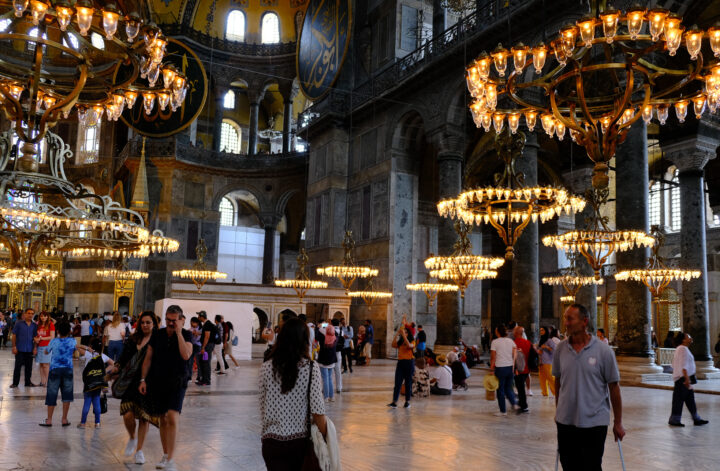
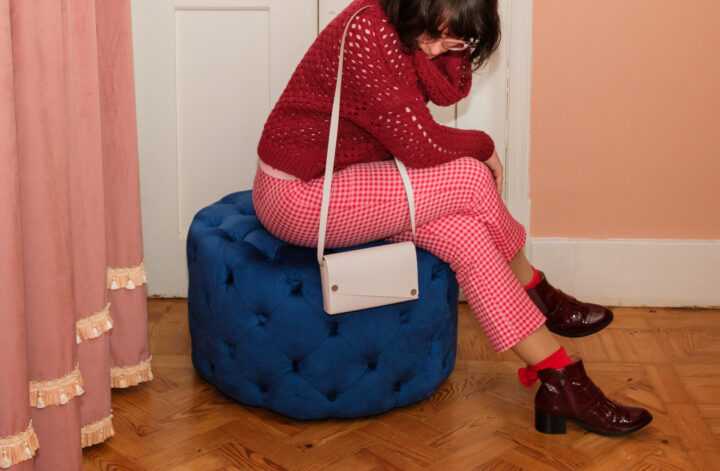
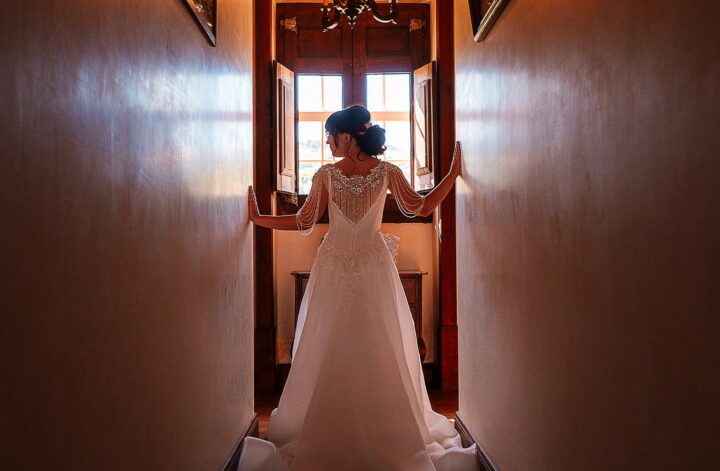

1 Comment